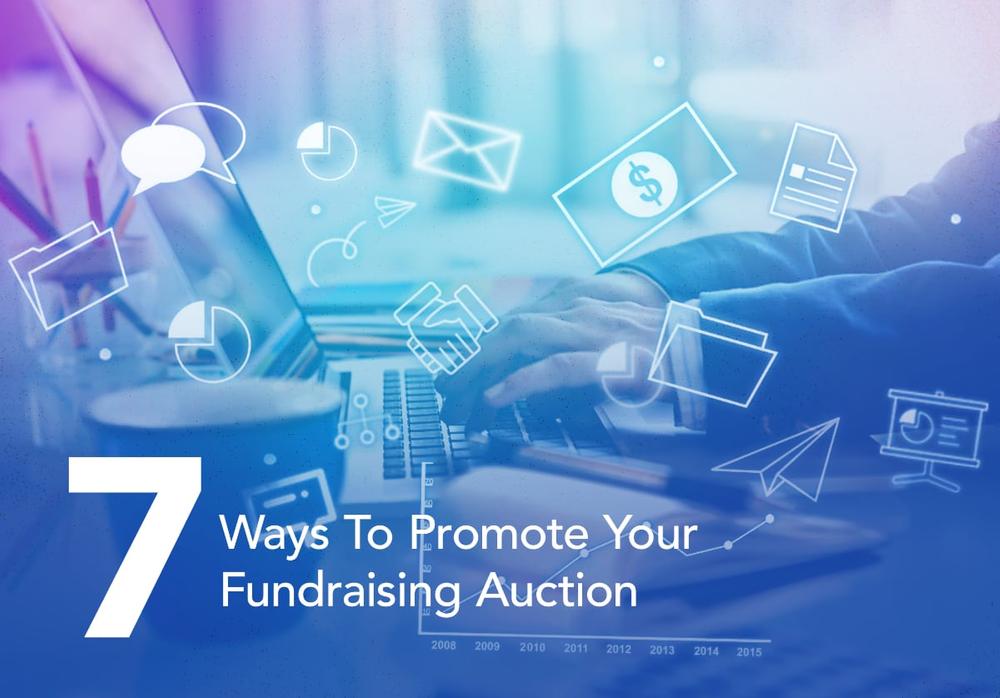You know what I hear all the time from organizations planning fundraising auctions?
“We’ve got amazing items this year—people are going to love them!”
And they’re usually right.
The auction items are fantastic.
But then a few weeks before the event, panic sets in. “Wait, how do we actually get people to come bid on all this great stuff?”
If that sounds familiar, you’re definitely not alone. It’s easy to get caught up in the excitement of securing donations and planning the perfect event, only to realize that promotion feels like this whole separate beast you’re not sure how to tackle.
The good news?
Getting people excited about your auction and driving real participation doesn’t have to be complicated or expensive.
What it does require is understanding that successful auctions are built on relationships and smart outreach, not just great items.
You need to meet your potential bidders where they already are and give them compelling reasons to prioritize your event over everything else competing for their time and attention.
Today, we’re going to walk through 7 practical promotion strategies that’ll help you fill your auction with engaged bidders. Whether you’re planning your first event or looking to improve on last year’s results, these approaches work for organizations of all sizes and budgets.
1. Email Marketing (Your Most Valuable Asset)
If you’re not leveraging your email list for auction promotion, you’re leaving donations on the table.
Email consistently delivers the highest ROI of any marketing channel, and for auctions, it’s absolutely essential.
But here’s where most organizations go wrong—they send one “Save the date” email and maybe a reminder the week before. That’s not a strategy, that’s just checking a box.
Instead, start promoting 8-10 weeks out with a simple announcement.
Then create a countdown sequence where each week you’re sharing something new with your list.
One of the biggest concerns I hear from nonprofits is that they’re worried they’ll be emailing their list too frequently. It’s a valid concern, but let your open rates determine if you’re on the right track or not.
If open rates drop significantly, scale back. If they stay consistent (20-25% is typical for nonprofits and anything over 30% is excellent), you’re probably on the right track.
2. Social Media Amplification (Organic + Paid)
Your nonprofit or organization probably already has a social media presence, but here’s the thing—most nonprofits treat auction promotion like they’re announcing a board meeting instead of creating an event people actually want to attend.
The key to social media success for auctions isn’t just posting “Save the date!” and hoping for the best. You need to create genuine excitement and anticipation, which means showing people what they’re missing if they don’t participate.
It also means planning ahead!
Start by showcasing your auction items as they come in. People love getting sneak peeks, especially of the big-ticket items.
A quick video of that weekend getaway package or photos of handmade items creates natural FOMO (fear of missing out) that gets people talking and sharing.
User-generated content is your secret weapon here. When a local business donates something, ask them to post about it and tag your organization.
When volunteers are prepping items, encourage them to share behind-the-scenes content. This multiplies your reach without any extra work on your part.
While it can be tempting to only rely on organic reach, the reality is that your social content will typically reach roughly 5% of your followers depending on the platform.
This is where a small paid social budget can make a huge difference.
Facebook and Instagram ads let you target people in your geographic area who are interested in charity events, community activities, or causes similar to yours. You can even create “lookalike audiences” based on your current supporters to find similar people in your community.
The budget doesn’t need to be massive—even $50-100 can significantly boost your reach when targeted properly. Focus on promoting your most engaging organic posts rather than creating separate ad content from scratch.
Focus on promoting your posts that already did well organically to get the best results for every advertising dollar!
3. Google Ad Grant (The $10,000 In Kind Donation From Google)
If your organization is a registered nonprofit, you might be sitting on one of the best-kept secrets in fundraising marketing: a $10,000 monthly Google Ads budget that Google gives away for free.
I know, I know—it sounds too good to be true. But the Google Ad Grant is part of the Google For Nonprofits Program and it’s absolutely real. In the right circumstances it can be effective for promoting fundraising auctions.
When someone searches for “events near me,” “fun things to do this weekend,” or “activities in [your city],” your organization can show up right at the top of Google’s search results without you paying a dime.
The catch?
You need to know how to set it up properly and there are limitations to the results you can expect. In many cases, you’ll need to take a less direct approach and trying to directly target keywords like “fundraising auction near me” probably won’t get the best results.
Instead, most organizations will get better results promoting their organization and services and then promoting their fundraising event once people get to their website.
Signing up for the Google Ad Grant is completely free and you can learn everything you need to know about eligibility and the application process here.

Create Auction Experiences That Keep Guests Coming Back for More
SchoolAuction.net has the tools to meet all your auction needs.
4. Local Media & Community Partnerships (Your Network Effect)
Don’t underestimate the power of old-school media and personal connections. While everyone’s focused on digital marketing, many organizations overlook some of the most effective (and free) ways to get the word out about their auction.
Local newspapers, radio stations, and community magazines are always looking for positive stories about local nonprofits or organizations making a social impact.
A well-written press release about your auction often gets picked up without any cost to you. The key is making it newsworthy—instead of just announcing your auction, focus on the impact: “Local School Auction Aims to Raise $50,000 for New Playground.”
Local businesses that donate auction items should also be promoting their participation. Most are happy to share that they’re supporting a good cause—you just need to ask and make it easy for them with simple social media graphics or email templates.
Chamber of Commerce networks, rotary clubs, and industry associations are often overlooked goldmines for auction promotion, especially if your board members are already involved in these groups.
5. Direct Mail (Still Works for Local Events)
For local fundraising events, direct mail still delivers results, especially when you’re targeting an older demographic that still tends to trust printed advertising over digital media.
The key is being strategic about it. Don’t mail to everyone in a 20-mile radius. Instead, focus on neighborhoods where your supporters live, areas around your organization, or zip codes that have shown support in the past.
Make your mailer visually appealing and include a clear QR code that links directly to your auction registration or information page. This bridges the gap between offline promotion and online participation—people can hold something tangible but still register digitally.
For schools, parent mailing lists are particularly effective. For nonprofits, consider mailing to previous donors or event attendees from your database.
The timing matters too. Mail pieces should arrive 3-4 weeks before your auction—early enough for people to plan, but close enough that they won’t forget about it.
6. Influencer & Community Leader Outreach
When I say “influencer,” I’m not talking about hiring someone with millions of followers. I’m talking about the people in your community who already have trust and credibility with your target audience.
Think about it—who do parents in your school district actually listen to? It’s probably the PTA president, the popular kindergarten teacher, or that one parent who seems to know everyone. For nonprofits, it might be a respected local business owner, a longtime volunteer, or someone whose family has been helped by your organization.
These micro-influencers are often more effective than any paid advertising because people trust their recommendations. The best part? Most are happy to help promote a good cause—you just need to ask.
Start by identifying 10-15 people in your community who have genuine influence with your target audience. Reach out personally and ask if they’d be willing to share your auction on their social media or mention it to their networks. Make it easy by providing them with pre-written posts, graphics, or talking points.
Board members can be your most powerful ambassadors here. They already believe in your cause and likely have diverse professional and personal networks.
7. Content Marketing
Creating compelling content around your auction serves a dual purpose—it helps with immediate promotion while building deeper connections with your community.
It can also enhance all your other marketing channels and it absolutely still works!
Start documenting your auction preparation process early. Behind-the-scenes videos of volunteers organizing items, photos of amazing donations as they come in, and stories about why specific items are meaningful all create natural content that people want to share.
The key is making it about more than just the auction itself. Share stories about how last year’s auction funds made a difference. Highlight the donors who contributed items and why they chose to support your cause. Create content that showcases your organization’s impact—the auction becomes the vehicle for supporting that mission.
People love getting sneak peeks of high-value items or unique experiences.
A quick video tour of that vacation package or photos of handmade items creates anticipation and gets people talking. User-generated content works especially well here—ask item donors to share why they chose to support your cause.
Don’t forget about the content goldmine that happens during and after your auction. Winner photos, celebration videos, and impact stories from the event all create momentum for next year’s auction while showing current supporters the difference their participation made.
Closing Thoughts
The organizations that consistently run successful auctions aren’t the ones with the biggest budgets or the most staff—they’re the ones who understand that promotion is just as important as procurement.
You’ve got the strategies. You know what works. The only question left is: which one are you going to implement first?
Your auction’s success starts with the decision to prioritize getting people in the door. Everything else is just details.




